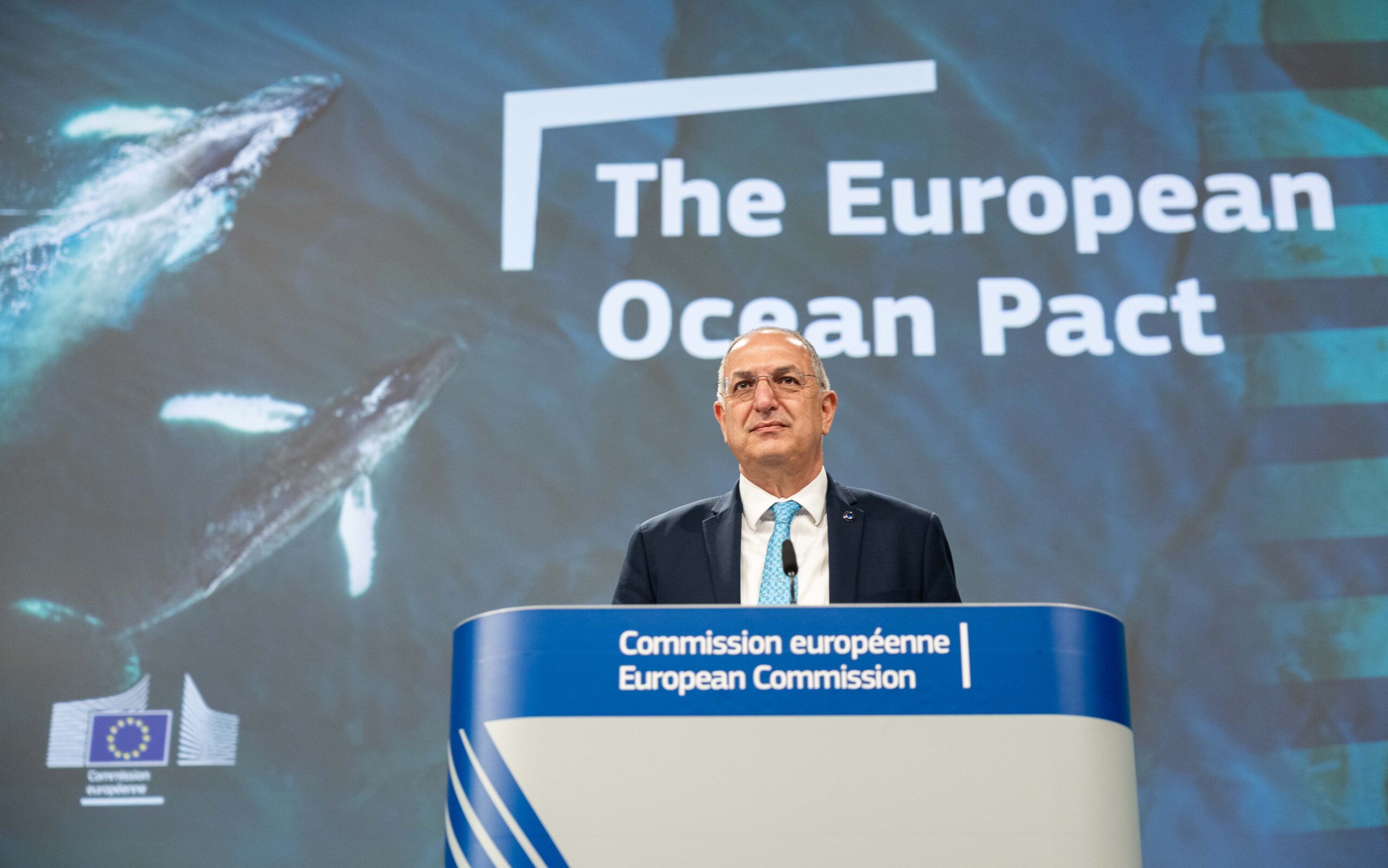Brussels – Six pillars of action to protect the oceans and the economic and social prosperity linked to them. The European Pact for the Oceans—first announced in last year’s policy guidelines by European Commission President Ursula von der Leyen and requested by the European Council in its conclusions of 20 March—arrived today (5 June).
From ocean protection to economic competitiveness, from scientific research to support for coastal communities, from monitoring, also with a state-of-the-art European fleet of drones, to EU ocean diplomacy on the global stage, the Pact aims to promote “a thriving blue economy and support the well-being of people living in coastal areas”. At the same time, it brings together EU policy initiatives on the ocean formulated over time by the Commission into a single framework and aims to ensure policy coordination and coherence.
As European Commissioner for Fisheries and Oceans, Costas Kadis, told the press,
“The ocean represents more than 70 per cent of the Earth’s surface, 80 per cent of global biodiversity, more than 50 per cent of the oxygen produced on our planet; 74 per cent of the EU’s foreign trade is carried by sea transport, 99 per cent of global internet traffic is via submarine cables and, last but not least, the ocean represents 5 million jobs in the EU: that is the reason for a European Pact for the Oceans.”
Hence, the six pillars of the document. First, there is the protection and restoration of the oceans’ health. In this area, the Commission will “support Member States in planning and implementing measures to protect and restore degraded coastal and marine habitats.” Actions range from encouraging Member States in the designation and management of marine protected areas to ensuring the implementation of existing environmental legislation, such as the Habitats Directive and the Nature Restoration Regulation, from revising the Marine Strategy Framework Directive to helping create new regenerative business models for coastal communities, for example by working on blue carbon stocks.

Secondly, Brussels aims at strengthening the competitiveness of the EU’s sustainable blue economy. Kadis explained: “In addition to the ongoing assessment of the Common Fisheries Policy and its possible revision, we will present” next year, “a vision for fisheries and aquaculture for 2040, with a focus on artisanal fishers.” In addition, the EU executive will support the implementation of offshore and oceanic wind energy technologies and propose a number of strategies: one industrial maritime and one port strategy to strengthen the EU maritime industry, one for sustainable tourism, and one for blue generational renewal to get young professionals into marine research, ocean techniques, and sustainable fishing.
The third pillar is support for coastal communities, islands and outermost regions. As recalled by the Commission’s Executive Vice President for Cohesion and Reform, Raffaele Fitto, “40 per cent of Europeans live within 50 km of the sea” and “coastal communities are the backbone of our society and economy.” Therefore, “we will present a specific strategy for the development and resilience of EU coastal communities, a new strategy for EU islands, and consult stakeholders in order to develop an updated strategy for the outermost regions,” Kadis explained.
The fourth element of the Pact is the promotion of ocean research, knowledge, skills, and innovations to “improve our knowledge of the oceans,” Kadis pointed out. Specifically, the initiative will be supported by a strategy for ocean research and innovation, and will inform the European Digital Ocean Twin—an innovative project aimed at creating a virtual model of the oceans. In addition, to raise awareness of the importance of the ocean, the Commission will set up a European network of young ambassadors for the ocean.
Regarding the aspect of maritime security and defence—which “is extremely important, given the current geopolitical context and considering that our seas are home to invaluable infrastructures that are indispensable for the wellbeing of European citizens”—”we will work to strengthen cooperation between the EU Coast Guard and Navy and maritime border security to address issues such as attacks on submarine infrastructure, cyber threats, and risks posed by the shadow fleet”. In this context, a coordinated strategy for removing unexploded ordnance from European waters, starting with the Baltic and North Seas, will be adopted. And “investment will be made in a pioneering European fleet of aerial drones” that will exploit technologies such as artificial intelligence and advanced sensors for real-time monitoring of maritime activities, thus enhancing the EU’s maritime surveillance capabilities.
The last point is that of the EU’s ocean diplomacy and international ocean governance, “to promote the EU’s ocean objectives and interests on the international stage,” such as the ratification and implementation of the Biodiversity Treaty beyond national jurisdiction. And “we will intensify the fight against illegal, unreported, and unregulated (IUU) fishing through the mandatory implementation of IT CATCH, the digital certification system for IUU catches, from January 2026,” the Cypriot Commissioner specified.
Finally, the implementation and monitoring aspect. “We are intent on presenting an Ocean Act by 2027″ that will “ensure that existing ocean-related objectives are identifiable under one umbrella and facilitate consistent and effective implementation, while reducing administrative burdens”. For the review of the implementation status, the Commission envisions the creation of an Ocean Board that brings together industry stakeholders and NGOs, as well as a monitoring panel to track progress and ensure that the Pact’s promises are not just a piece of paper.
English version by the Translation Service of Withub





